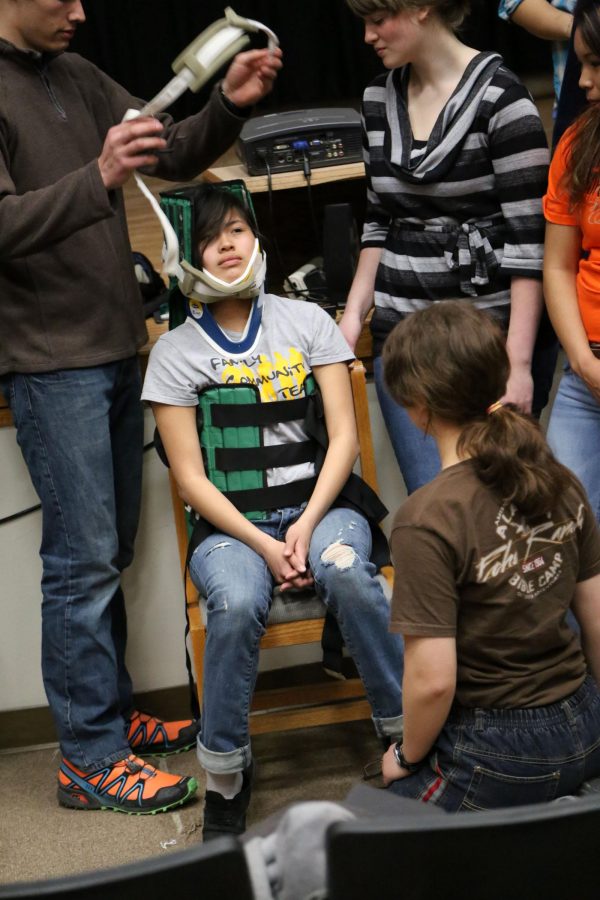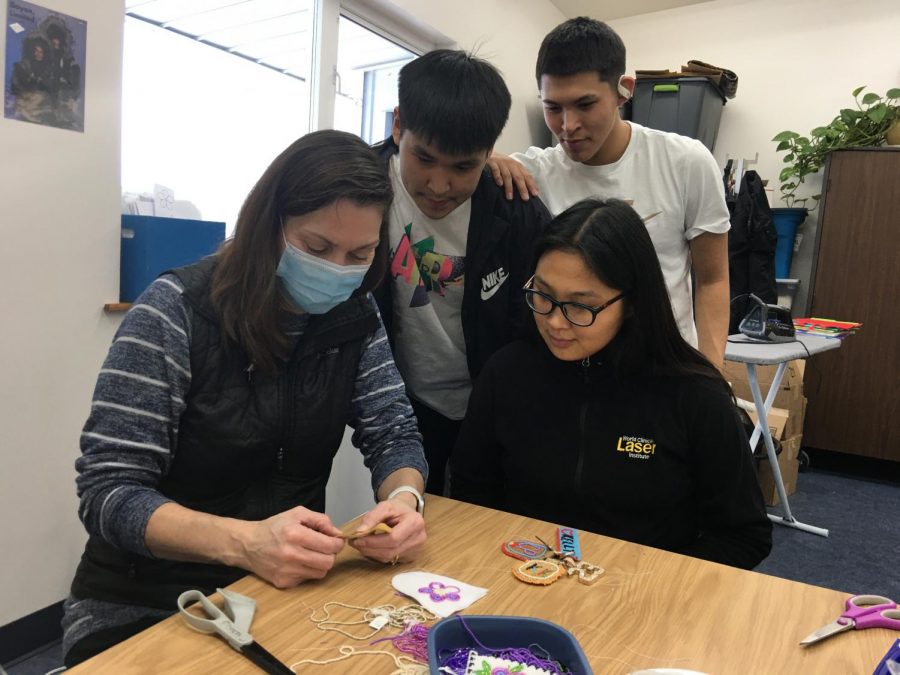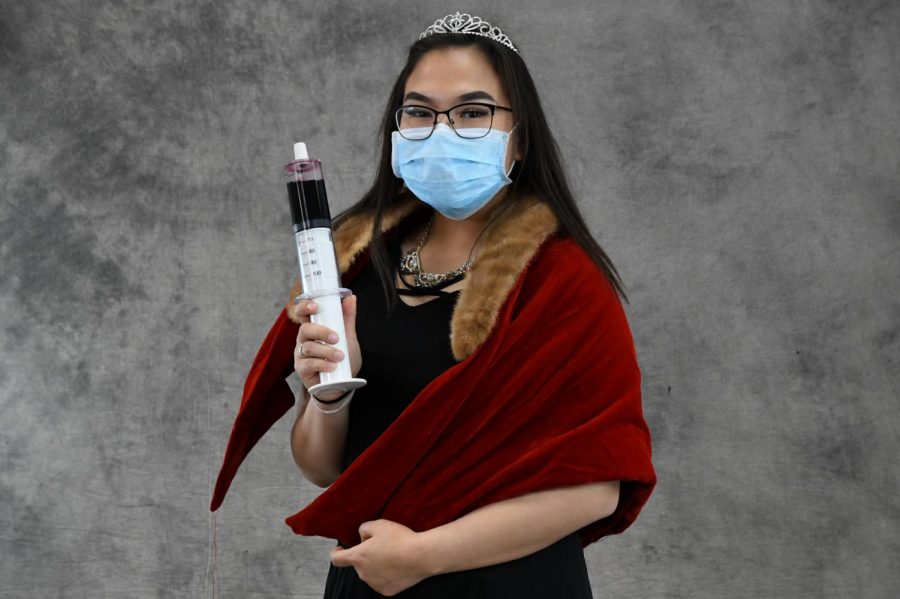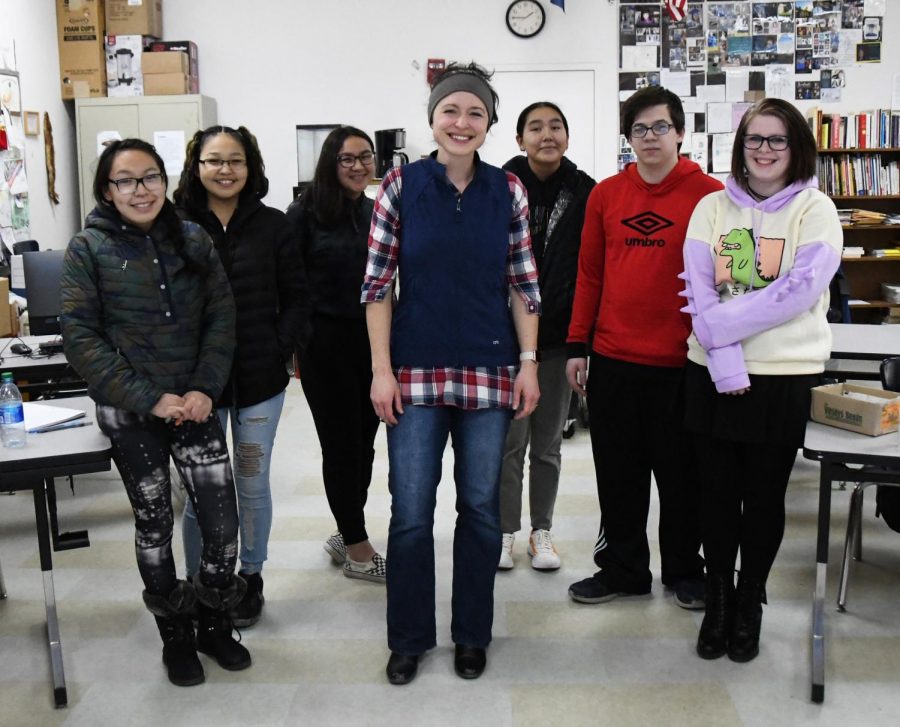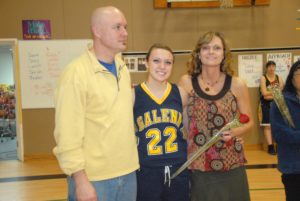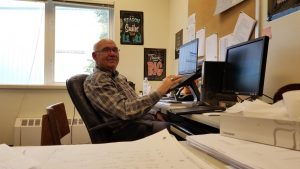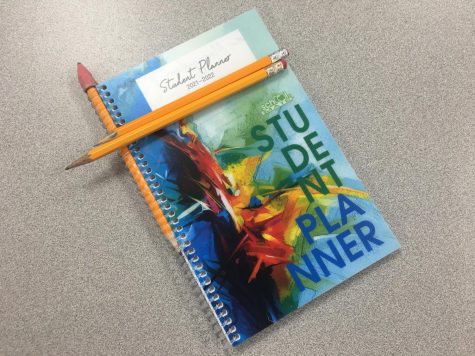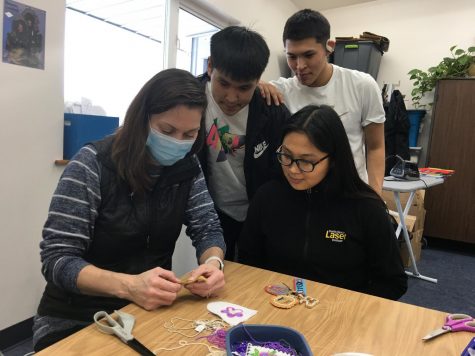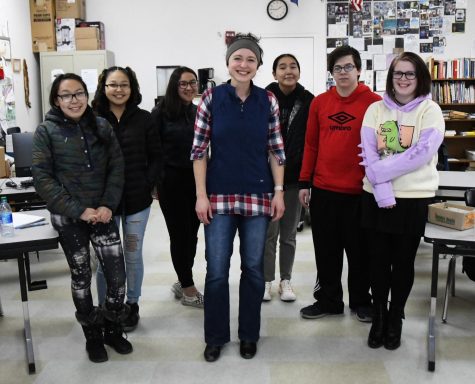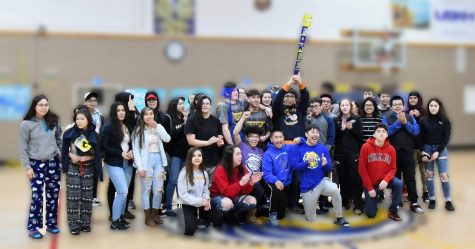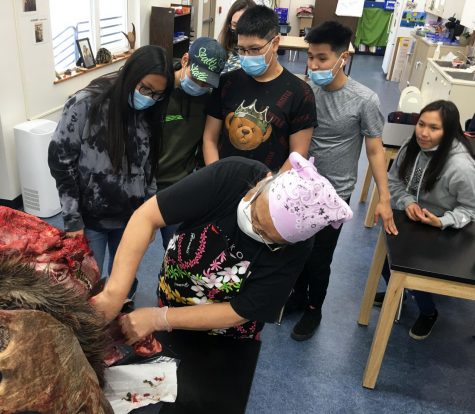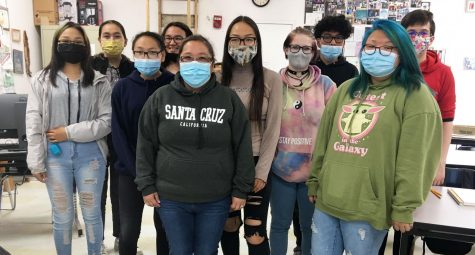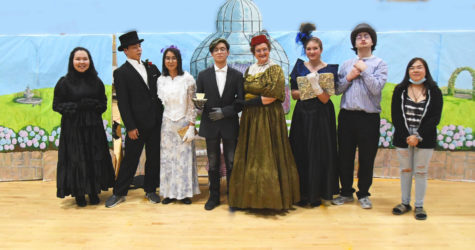Academy teaches skills: Emergency trauma technician classes bring students from around the state
Galena junior Julia Grant role-plays being an accident victim during the health academy training.
April 27, 2014
“If the opportunity passed and something bad happened, you would feel terrible,” said Sara Loehr, a high school student from Sterling, Alaska, who has wanted a job in the medical field since she was a little girl.
She was just one of the 23 students taking part in the emergency trauma technician (ETT) health academy classes offered at GILA during the past two weeks.
Students from Galena’s Interior Distance Education Alaska (IDEA) program and Yukon-Koyukuk School District were given the chance visit Galena and receive their ETT license, provided they’re able to pass a test and remember how to assemble an oxygen tank.
I was able to join one of the classes in the auditorium at GILA and was fortunate to have my blood pressure taken by Charann Alick, a senior from Palmer.
“There’s a lot of stuff to learn and remember,” Charann told me as she searched for my brachial artery. She explained to me that taking blood pressure is a routine ETT action that is made when someone is in need of help.
After that, she took my pulse. While wrapping a cusp around my bicep she told me about her plans to work as a certified nurse’s assistant. The cusp she used, she explained to me, is a large Velcro bandage that cuts off circulation making it easier to find a patient’s pulse. After taking thirty second to count each beat from my pulse, Charann multiplied the number by two and informed that I have a regular, strong, pulse.
Logan Holt, a junior from Juneau and Brandyn Lessmann, a sophomore from Fairbanks, also practiced taking pulses with Ashlee Chandler, a junior from Fairbanks. Ashlee sat between Logan and Brandyn, each boy holding her hand and counting her pulse. They told me about their haste to complete a skill sheet, a check list of all 16 ETT procedures they needed to perfect.
Students Sara Loehr and Mariah Neglaska, a sophomore from Kaltag who is a GILA alumnus, were working together to make the chest of a dummy rise and fall. They attempted to do this with a bag valve mask. Mariah held the large mask with one hand on a large air-filled pouch and used the other hand to hold the attached mask on the dummy face. As she tipped back the dummy head, she squeezed the pouch attached to the mask and was successful. At the same time, Sarah counted each administration of air.
Mariah and Sara explained to me that using the bag valve mask is necessary for use on patients who are having trouble breathing, and is better than mouth to mouth CPR because it’s more sanitary.
Bob Hawkins, an CTE instructor and head chaperone from Fairbanks, pointed to an oxygen tank, which he described as “that black thing that looks like a doughnut.”
Very carefully, Sara Henderson, a junior from Huslia, twisted a valve onto an oxygen tank she had been setting up. A loud SWOOSH sound escaped from the tank. Several of us who had been watching jumped but continued in our observations.
After completing the assembly of the tank, Sara began to talk to her “patient.”
“I’m going to put an oxygen mask on you so you can feel better,” Sara said. Misty Alick, a junior from Palmer gave her confirmation. While putting an oxygen mask on Misty, Sara asked questions like, “Are you comfortable? And are you feeling okay? … I’m gonna take this off,” she said finally, and then disassembled the tank.
There had been more role-playing in the class.
Amanda Kopp, a freshman from Galena, lay on the floor as Sara Loehr asked her who the president of the United States is. “Obama,” Amanda said. Sara continued to ask her the time, where she is, and what had happened, completing the person, place, event procedure that she had learned earlier.
Jan Dick, another ETT instructor, observed as Sara assessed Amanda’s skin, noticing the color, temperature, and condition, completing another procedure required of an ETT.
“You’re gonna run into a situation one of these days – what are you gonna do?” said Mr. Dick, who then recounted a story one of his former students had told him. “Right now we’re just learning the steps, turn it into a process.”
Mr. Dick was very encouraging to all of the students, and the students were appreciative of all the mentoring they had been receiving.
“(My favorite part is) getting to meet all the new people and learning things I didn’t know,” Amanda said.
Aside from the fun, most students has had some challenges to face, too. For Brandyn, it’s recreating what the instructors tell him to do, and for others it’s passing the test and memorizing the vocabulary. For the most part though, the students enjoyed their time in Galena and are excited to be learning and meeting new people.


